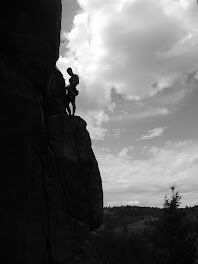One of my favorite participation opportunities in #CMC11 is getting to hangout in the Google Hangout..it has been great. The conversation groups though small, Google Hangout only allows up to 10 participants at a time have been interesting, with different points of view freely shared.
As you may have guessed right now I have amassed a collection of photos, slides, and negatives from the late 1800’s to today. This is what John Collier says about individual photos versus collections of photos: I know, being one of the few specialists of non-verbal evidence that this is the way it goes. It’s the way it goes in every anthropologist’s photographic file. The individual pictures are not every important. All the pictures together in like categories become extremely important, because they have an extra authority to them.It is Collier who suggests that when photographs are studied it is a search for meaning based on the entire visual record so that details from the structural analysis can be placed in a context that defines their significance. Collier defined photo elicitation, where participants give their responses to and define an understanding of the images.
Richard Chalfen can be credited with taking a lead in recognizing the need to study the family snapshot. He defines that the study should be undertaken which can examine the snapshot’s “construction, organization and consumption of photos from a sociological perspective.” Chalfen has developed a grid which can be used to define or give a study a framework. This grid consists of five communication events and vie components. Studying the photos using this grid establishes a pattern of activity and behavior.
Planning event
Shooting Event
Editing event
Exhibition event
Can it be determined who participated in the photo; who took it, who was in it, the background and setting, the topic or precipitating even for the photo, and the composition.
Gabrielle Greenberg states, in her article on Pictorial Semantics, November 2010, that “Humans are able to reliably extract complex information from pictures they have never seen before, with remarkable speed and facility, but in ways which vary among communities of viewers. Because such interpretation can be carried out on novel pictures, these facts cannot be explained by simple memorization…she further states that “the content of a picture is not merely what it happens to communicate; rather it is what the picture depicts independent of what is communicated.”
Eventually I hope this blog generates enough interest that I elicit comments on the photos from readers. This is called photo elicitation a method of studying and researching photographs defined by John Collier and others This is defined as follows:
Photo elicitation is another technique of data gathering. This methodological tool is a combination of photography as the visual equivalent of a tape recorder, and ethnography or other qualitative methods. Photo elicitation techniques involve using photographs or film as part of the interview—in essence asking research subjects to discuss the meaning of photographs, films or videos. In this case the images can be taken specially by the researcher with the idea of using them to elicit information, they can belong to the subject, for example family photographs or movies, or they can be gathered from other sources including archives, newspaper and television morgues, or corporate collections. Typically the interviewee's comments or analysis of the visual material is itself recorded, either on audio tape or video, etc
Therefore, in keeping with previous blog posting I present the following photos for your consideration:
The family car seems to be ubiquitous in pictures. I really liked this one and I am wondering if the one boy is pretending to be driving!

This little girl does not seem to be particularly happy about being on a horse. I liked the background scene here as well, especially the old barn style roof on the one house in the background. A really great scene.

As you can tell I do little to retouch my photos. This one is fuzzy and blurry, but I really like these two girls with their little bouquets of flowers

A great picture that makes me wonder where they are traveling to or from. I like cars in pictures and this one is no exception.

This picture makes me question the context in which is was taken and ask..does anyone smoke a pipe anymore? A great pic..is he posing for serious or is this all in jest? I just find something humorous about this picture.

A great wedding scene, the bridesmaids and flower girls? Or attendants.

And maybe she didn’t want her picture taken!

One of my favorite pictures. I really like this scene of these three people on this diving board.










































